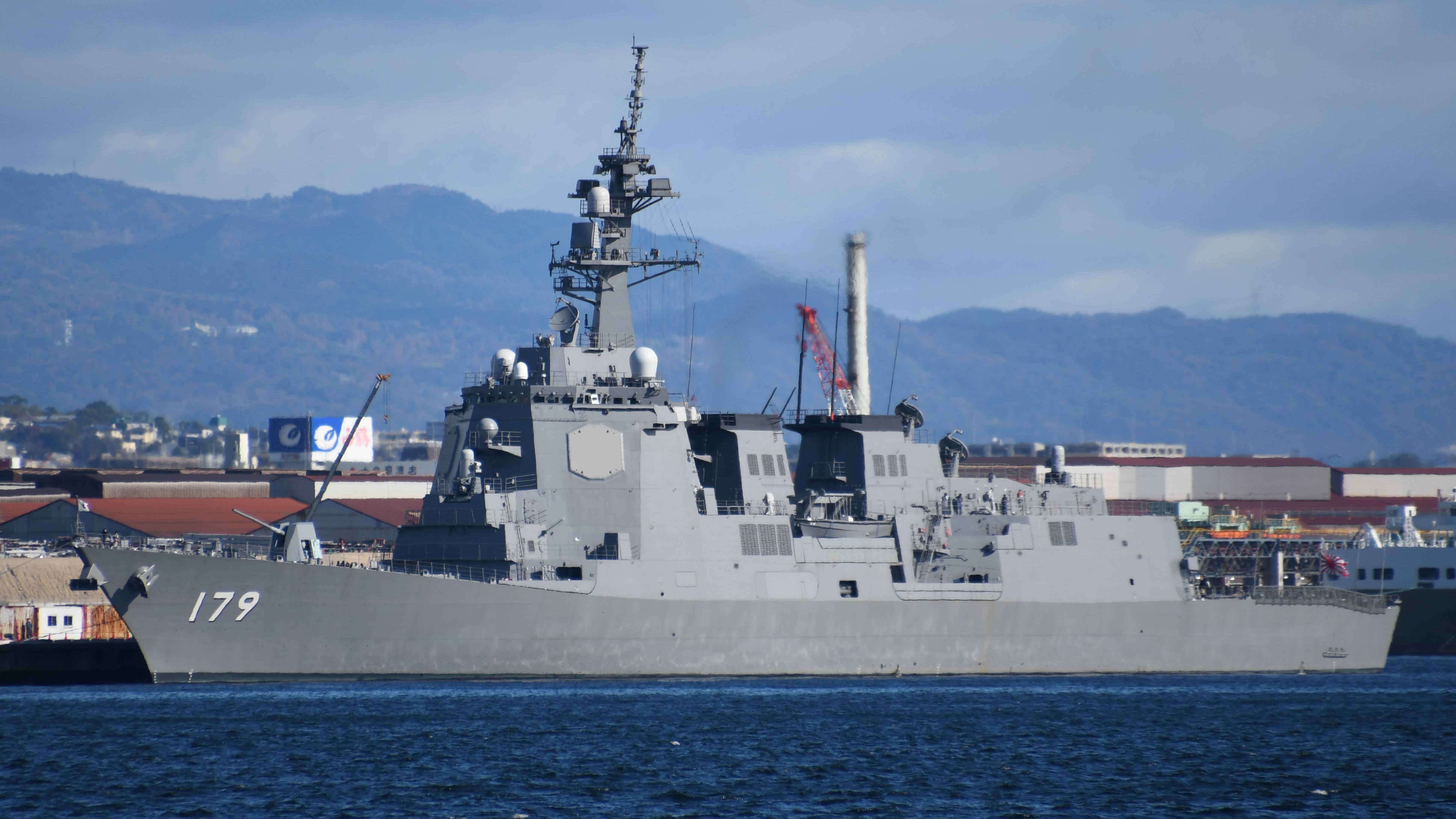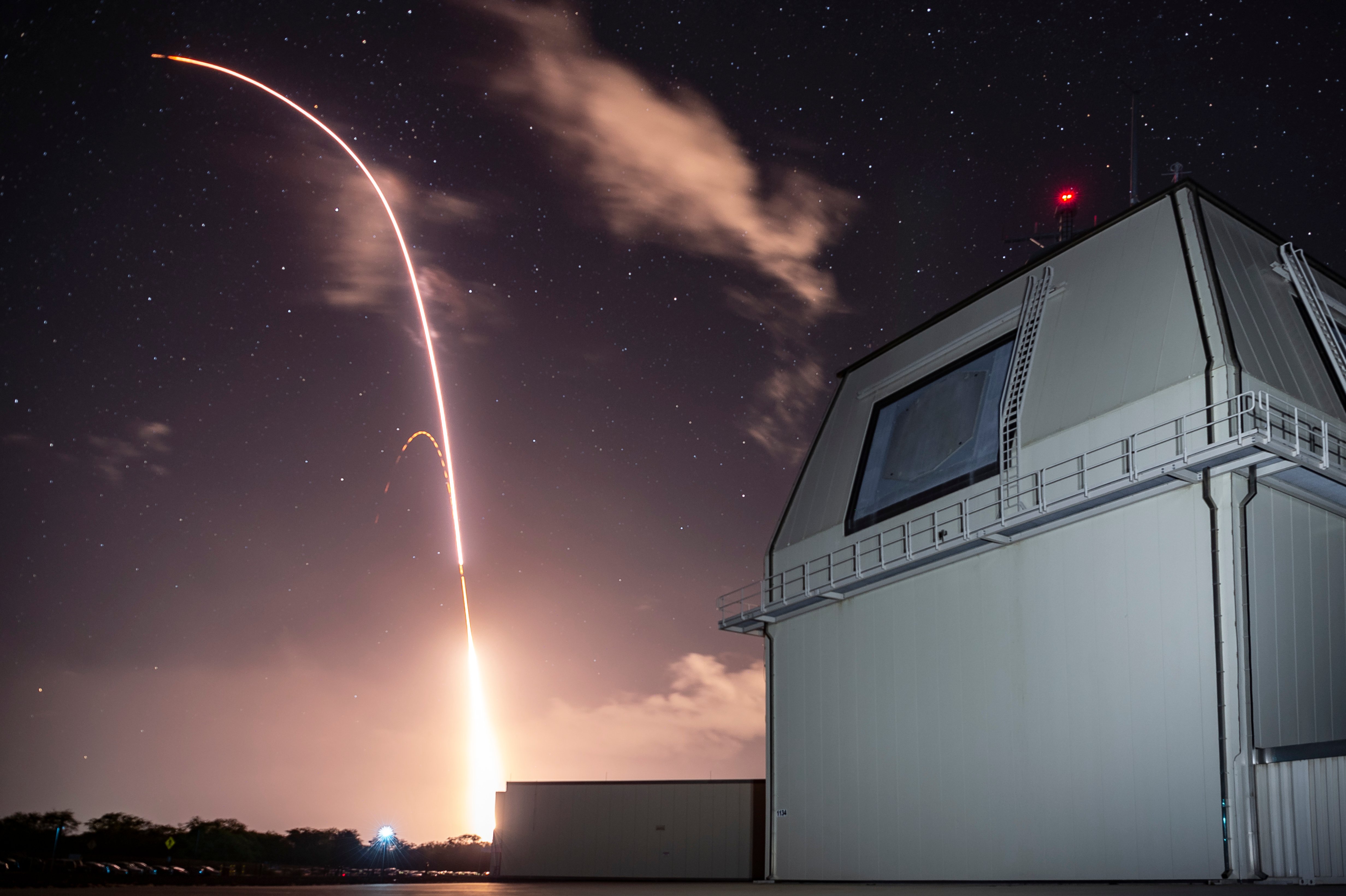
Japan’s Ministry of Defence is proposing to build a pair of ballistic missile defense ships – the among largest warships in the Japanese inventory since World War II – government officials said last week.
The Ministry of Defense listed design expenses and engines for the two Aegis BMD ships among 100 items requested that did not have a specific cost at the time of the budget rollout as part of its FY23 budget request. The Ministry of Defense requested $39.7 billion in spending for the next fiscal year, which exceeds the FY 2022 budget of $38.4 billion.
The two ships would be built instead of the land-based Aegis Ashore installations that the Japanese Self-Defence Force backed away from in 2020 based on risks of missile debris falling to the ground, USNI News reported at the time.
“In view of the cost and time [necessary] for the deployment, we will halt the process,” then-Minster of Defense Taro Kono told reporters, according to Kyodo News.
“For the time being, we’ll maintain our missile defense capability by Aegis-equipped destroyers.”
The two Aegis destroyers are expected to have a displacement of around 20,000 tons with a length of 690 feet and a beam of around 130 feet, making them one of the largest and heaviest ship that the JMSDF will operate. In comparison the Izumo class helicopter destroyers have a displacement 19,800 tons (27,000 tons with a full load) with a length of 800 feet and a beam of 124 feet while Japan’s largest destroyers are the Maya class destroyers, which have a displacement of 8200 tons and a beam of 22.2 meters.
The ships are to have a crew of 110 personnel with personnel accommodations being enhanced to enable long deployments on station around Japan. The Ministry of Defense is likely pushing for the first ship to be commissioned in 2027, with the second in 2028, USNI News understands.
In a news conference on Friday, current Japan Defense Minister Yasukazu Hamada said that two new ships would relieve the burden of the BMD task on Japan’s current eight Aegis destroyers, which would then be free to act as a deterrence against maritime incursions in the southwest of Japan.
The current eight JMSDF Aegis destroyers consist of two Maya–class, two Atago-class and four Kongo-class destroyers. Hamada added with North Korea improving their ballistic missile operational capabilities, among them being able to conduct multiple simultaneous launches and increased altitudes in their trajectories, a new ship with higher interception capabilities in contrast to the existing ships was required.
Hamada said that the two destroyers would be large enough to enable operations that would be carried out in rough weather and enhanced crew quarters to allow the ships to conduct longer deployments. The Japanese defense chief also said that the ability to intercept hypersonic glide weapons would also be included in the ships’ capabilities.

Hamada confirmed that the defense ministry was accelerating the acquisition process to get the two destroyers into service faster than usual.
“We believe it is an extremely important initiative to drastically strengthen our defense capabilities within five years,” he said.
Japan is not the only country with eyes on new ships. India formally commissioned the Indigenous Aircraft Carrier INS Vikrant (R11) into the Indian Navy in a ceremony at Cochin Shipyard Limited, Kochi, by Prime Minister Narendra Modi, who also unveiled the new Naval Ensign for the Indian Navy.
Vikrant’s keel was laid down in 2009. The ship was originally planned for commissioning in 2016, but numerous delays during its construction led to the 2022 commissioning date.
The carrier has a displacement of 43,000 tons fully loaded and a length of 262m and a width of 62 meters. The carrier’s air wing will comprise of 30 aircraft including MiG-29K fighters Kamov-31 and MH-60R multi-role helicopters while Advanced Light Helicopters (ALH) and Tejas Light Combat Aircraft (LCA) (Navy) are envisioned to be operating off the carrier in the future.
The Indian Navy also has a requirement for 26 Multirole Carrier Borne Fighters (MRCBF) aircraft with Boeing’s F/A-18 E/F Super Hornet and Dassault’s Rafale-M in contention for that requirement.
Despite its commissioning, Vikrant is only expected to be fully operational in mid to late 2023 due to flight trials and integration of the MiG-29Ks into the carrier.





